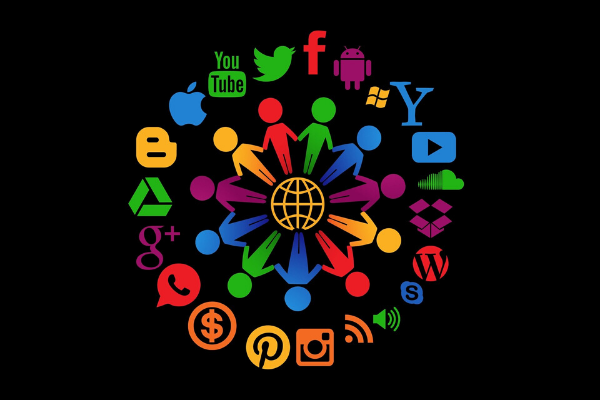Insights
INSIGHTS
All Topics
My Account
The biggest digital marketing trends we've seen so far in 2020
28 Aug 2020by Chloe Green
Now that we’re over halfway through the year, it’s time to take a look at the five themes we predicted would dominate digital for charities in 2020 - and what’s changed (spoiler alert: a lot)
Back in January, full of optimism for the year ahead, we sat down in front of the microphone to discuss ’the top five digital marketing trends to dominate 2020’ for the year’s first webinar for charities.
Sitting here at the end of August, it’s dizzying to look back over half a year during which so much has changed. Back then, the biggest hurdle we thought we were going to have to face was Brexit, innocent as we were to the sudden upheaval that both the sector and the wider UK economy was about to face.
Whilst the pandemic has put the brake on certain trends, it has only served to accelerate others. That’s why it’s such a fascinating exercise to look back over those five themes and review them in the light of August 2020 and what we’ve learnt.
The five trends highlighted by the team were:
- Artificial intelligence
- Customer experience
- Personalisation 2.0
- Rebuilding donor trust
- Digital culture and strategy
Artificial intelligence
2020 was touted as the year “artificial intelligence becomes embedded as business as usual.” It’s fair to say that early-adopter technologies for the charity sector like artificial intelligence and machine learning have taken a back seat to more immediate operational concerns and ’keeping the lights on’.
“It should have been artificial intelligence’s moment in the sun. With billions of dollars of investment in recent years, AI has been touted as a solution to every conceivable problem... but the pandemic highlighted the fragility of many AI models. From entertainment recommendation systems to fraud detection and inventory management – the crisis has seen AI systems go awry as they struggled to adapt to sudden collective shifts in behaviour.”
- Kathy Peach, Nesta
2020 is probably not the year for uninitiated charities to start experimenting with emerging technologies like AI. But it’s put into sharp focus the limitations of algorithms and the importance of people-led approaches to technology.
“COVID-19 has reminded us of just how quickly humans can adapt existing knowledge, skills and behaviours to entirely new situations,” Peach continues, “- something that highly-specialised AI systems just can’t do. At least yet.”
Digital culture and strategy
Of all the themes we discussed back in January, this one has undoubtedly become the most prevalent over the last six months. A combination of lockdown, social distancing, shrinking budgets and the drastic behaviour changes of the public has made the ability to quickly digitise methods of service delivery the difference between ’sink or swim’ for many charities. But none of this can be done without having the mindset and understanding necessary to embrace digital.
Principle 7 of the Charity Digital Code of Practice is Adaptability. This principle emphasises that the ability to adapt is down to how well you communicate change - including how involved users are in change, and how willing everyone is to try new things – some of the most important elements that make up a ’digital culture.’
“At the heart of every digital strategy lies people, and the culture you create in the work environment. Culture can kill digital transformation unless culture itself is transformed.”
- Chris Hall - Head of Marketing, Charity Digital
For teams suddenly coming to grips with remote working, this has never been more true. Charities not willing to adapt their culture to embrace tech and offer more flexible approaches to work are faced with a Catch 22 situation. They are simply being left behind by the valuable talent they need to survive and grow beyond the recession.
Today’s job searchers look for flexibility and choice, and the ability for charities able to do so to offer remote working as an option in their job adverts (something which six months ago was virtually unheard of in the sector) is now a must.
Customer multi-experience, ’personalisation 2.0’ and trust in charities
Over the last few years, organisations have been making it a priority to transform their customer experience, in order to cater to a much more digitally-savvy public. Audiences in 2020 are swamped with content and digital services, and as a result, expect much more from their digital experience. They don’t have the time or energy to spend on organisations that don’t match up to their expectations.
As our webinar back in January stated, research suggests that over 33% of customers would consider switching to a competitor after just one bad experience. It’s the attention to detail and the little things people experience online that have become the top competitive differentiator among charities, proven to drive more donations and build brand trust.
In the light of the pandemic, this is unlikely to have changed. In fact, with potentially the biggest recession in 300 years on the horizon:
“Brands need to look to the marketing tactics that will deliver maximum value across the channels they own,” says Mike Austin for e-consultancy. “Post-pandemic, purse strings are likely to be tighter and competition even more fierce, so getting the basics right will matter more than ever: demonstrating a deep understanding of an individual and making their life easier.”
Embracing a user-focused strategy can potentially be resource-intensive “and involves more than any single initiative or tech can accomplish, but is all about keeping users at the core of every strategic decision,” Chris Hall advised back in January. However, it doesn’t have to mean all new technology. Making your efforts really resonate with people can mean going back to the basics and making use of what’s already out there: ensuring consistency across the different channels you own, taking the time to encourage authentic community building and putting user-generated content front and centre.
More on this topic
Recommended Products
07 Mar 2025by Ioan Marc Jones
A-Z incredible fundraising ideas for charity
07 Mar 2025by Ioan Marc Jones
An A-Z glossary of service delivery terms and definitions
07 Mar 2025by Laura Stanley
Marketing trends for charities in 2025
Our Events
Charity Digital Academy
Our courses aim, in just three hours, to enhance soft skills and hard skills, boost your knowledge of finance and artificial intelligence, and supercharge your digital capabilities. Check out some of the incredible options by clicking here.


















